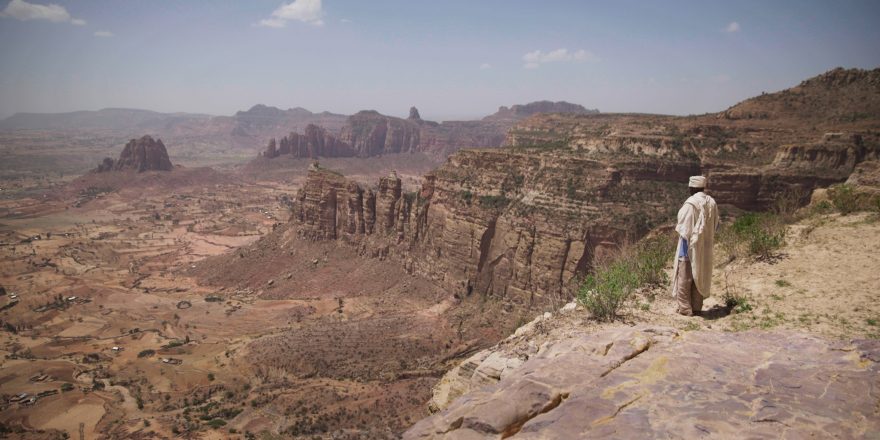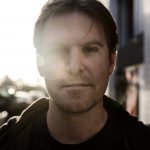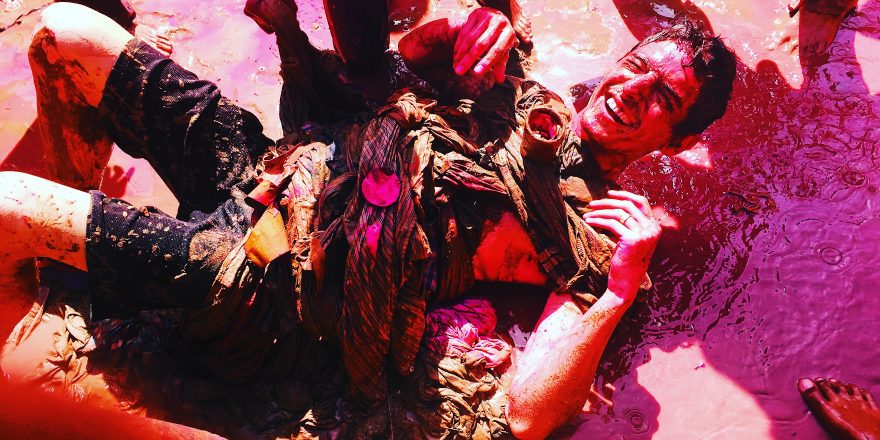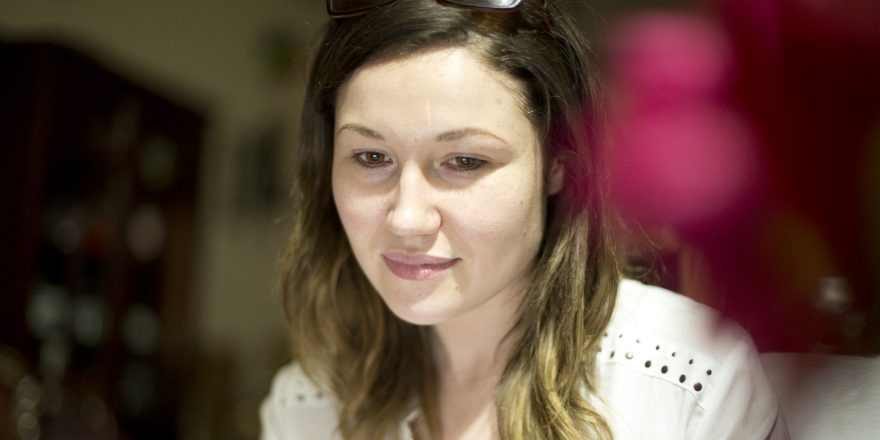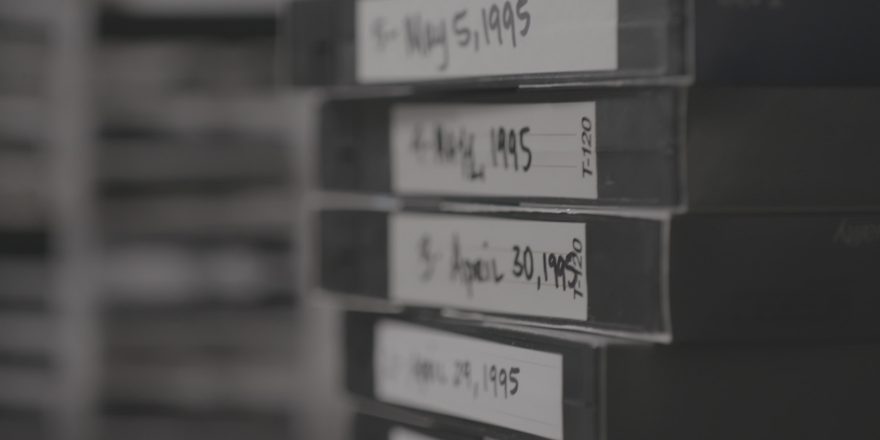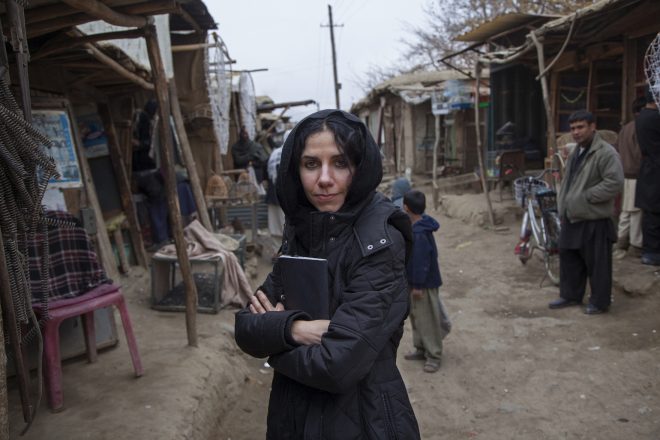Gary Lynch is showing me stunning photographs on the wall of his lab which appear to depict a beautiful night sky full of stars. Others resemble galaxy clusters in outer space. But they’re not. Gary is one of the first people to devise ways to photograph memories forming in the human brain. What appears to be an image of the cosmos, could very well be a memory of a summer’s day, or a first kiss, as seen through an unimaginably small microscope. To accomplish this, Gary had to embark on one of the most difficult and elusive quests ever undertaken by a human being.
“For 30 years, believe it or not,” he tells me, “I chased the same question: Where is memory? It’s fair to say that we know of nothing in the universe as complex as the brain. You have trillions upon trillions upon trillions of synapses. You’re learning something right now. Where is it? Well, we don’t know. No one had actually visualized a memory trace. Memory is a mysterious phenomenon. It’s by far the greater part of who you are. How does this thing make us … Us?”
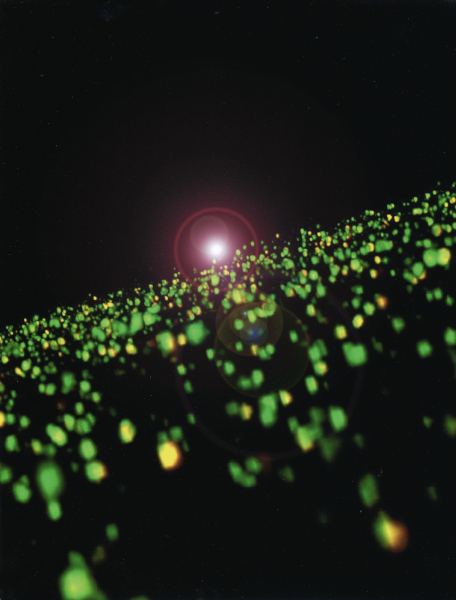
“I can relate to the runner in your film,” Gary continues, referring to Al Arnold, a man who pushed his body to uncharted extremes to become the first person to run all the way across Death Valley, one of the hottest places on Earth. It was a non-stop four-day journey that started at the lowest point in the Western Hemisphere and ended at the highest mountain peak in the continental United States; a seemingly impossible feat he accomplished despite the fact that he is almost completely blind and ran totally alone. Gary knows I’m here working on a film that will attempt to make intimate connections between the runner’s work and his own.
These may seem like unrelated quests, but Gary intuitively understands the many connections between trying to understand the human brain and ultramarathon running. “This has been a 30-year run to get to one place,” he says. “Nothing like this had ever been attempted. I told myself, ‘I’m going to bring in a whole army of rats, invent state-of-the-art brain slice chambers, work my way through 600 scientific papers and countless bottles of booze’… but because I’m focused on this one thing, my work gradually became an accelerating curve away from what everyone else is doing. Not just myself, but this whole laboratory became increasingly isolated, and I wound up in a place where I suddenly realized no one was around anymore. And I still kept going. In fact, I never slowed down … I just absolutely refused to quit. So I have to ask myself the question: why?”
—-//—-
Jim Magee and I are on foot, crossing the 2,000 acres of empty desert he bought in the middle of nowhere, a couple hours outside of El Paso, Texas. We are making a pilgrimage to a place where he has been working mostly alone for about four decades, building a mysterious creation called The Hill. Jim first saw it in his dreams while living in a chicken coop in upstate New York. Some have compared it to the Egyptian pyramids, others to a small city. It is inhabited only by desert light, the occasional stray rattlesnake and gargantuan works of junk art, some weighing many tons each, which Jim began making in the Staten Island junkyard which was his home while working as a legal consultant to the United Nations. The title of each artwork is often several pages long, and can only be experienced when Jim whispers it into your ear as you stand in front of it. The whole undertaking defies description and leaves its rare visitors speechless; it seems almost impossible that it was essentially made by one man. He has poured 2,400 tons of stone into its buildings and walkways, and the steel doors of its structures are so massive that they require a team of people to open them. Jim has done all this despite not having legs – he is mostly wheelchair-bound, and occasionally wears artificial strap-on legs. “To cut myself off from The Hill,” Jim tells me, “would be to cut myself off from myself.”
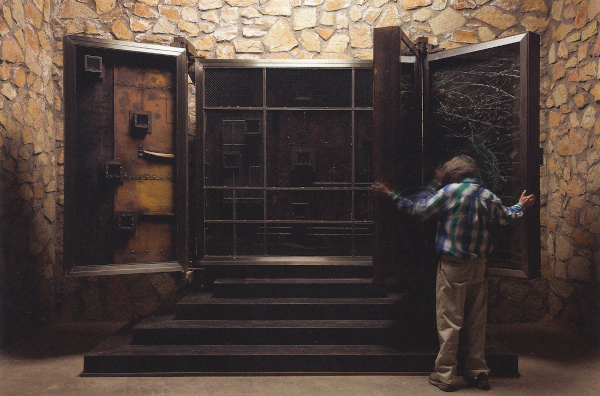
“Very few people have seen The Hill over the years Jim has worked on it,” says Jim’s lifelong friend Bob Ostertag. “It is not open to the public, not advertised, has no art biz huckster boasting of its import. Yet he has poured his life into it, thousands of hours of labor, and tens of thousands of dollars of materials. It is a life’s work, more so than any other work by any other artist I have known … Jim has very deliberately created a work that can never be sold, will never acquire any market value, can never be moved, and is even difficult to find.” Visiting The Hill reminds me of Gary Lynch’s insatiable search for memory in the human brain. Lynch and Magee’s unflagging persistence against all odds raises the same question: why?
And the scale of it keeps increasing. When I ask Jim what is inside the final building (the one that is always mysteriously locked up), he tells me that he recently had to install floor hinges that can hold up to 100,000 pounds while moving within rooms that appear and disappear within other rooms as you walk through them. Unable to fathom this, I try to peek under the doorway to this building every time Jim isn’t looking. My attempts to see through this crack will span the next decade but, despite numerous visits, whatever is inside remains a mystery.
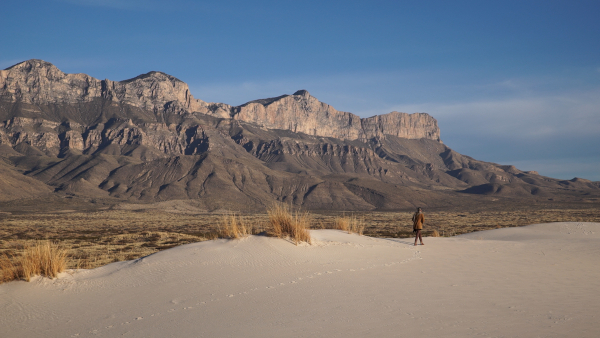
Years later, I returned to a nearby corner of this remote desert to film the painter Linda Lynch, for the same documentary I was working on about the ultramarathon runner and the memory photographer. In what seemed like a radical coincidence, I discovered she knew Jim. The three of us met for lunch, after which Jim invited us to see his latest work at The Hill. To my astonishment, he let us both into the final building. Linda and I walked inside, in a state of awe. Though still far from completion, I finally understood. The way Jim described it was without exaggeration. And it was like walking straight into Jim’s heart.
“To be near to that which is truly and deeply moving in one’s short time on this Earth,” Jim tells me, “is to learn a language deeper than words. The things that really speak to the best of what we are… it’s a mystery. Maybe it can never be fully articulated.” We look through the doorway to a seemingly endless expanse of unforgiving, empty desert surrounding us. “I had to go as far as possible from the art world to find it.”
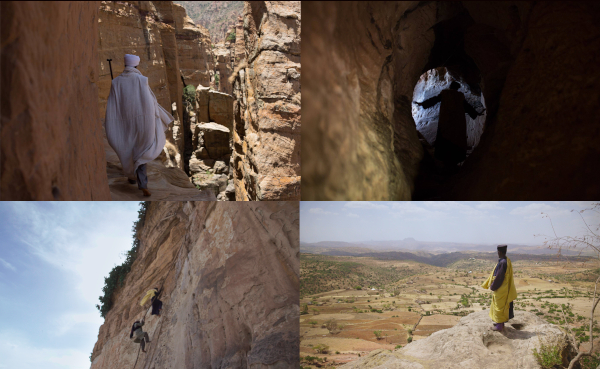
Neither Jim Magee nor Gary Lynch appear in the final cut of my documentary, though their epic personal journeys would have fit in perfectly. Echoes of the Invisible — as the film was eventually titled — follows a diverse group of people who likewise persist on seemingly impossible journeys into the most extreme environments on Earth, including Al Arnold running across the deadly deserts of Death Valley; death-defying monks free-climbing up nearly vertical cliffs to reach their remote 2,000-year-old prayer caves in Ethiopia; Rachel Sussman, a photographer capturing photographs of the oldest living organisms; Paul Salopek, a journalist walking across the world in the footsteps of the earliest human migrations; and scientists building machines to look back nearly to the beginning of time. The three most common questions I’ve been asked about the film are: “What made you want to combine so many seemingly unrelated stories?”, “What other stories did you encounter along the way that didn’t make it into the film?” and “What do you ultimately want people to take away from this film?”
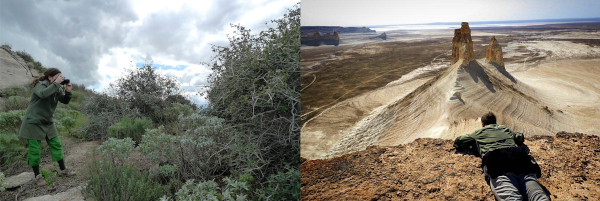
I’ve already mentioned a couple stories that ended up on the cutting room floor. Perhaps you’ve discovered an answer to the first question within them. If you haven’t, take a moment to consider the following words of theoretical physicist Lisa Randall, who I met while filming at CERN’s Large Hadron Collider in Switzerland: “It is precisely the slightly jarring juxtaposition of ideas coming from different directions that often leads to new connections or insights or poetry (which is what the term ‘creativity’ originally applied to). A lot of people prefer to work linearly. But this means that once they are stuck or find that the path is uncertain, their pursuit is over. Like many artists, scientists make progress in patches. It’s not always a linear process. We might understand some pieces of a puzzle but temporarily set aside others we don’t yet understand, hoping to fill in these gaps later on. … In science, the right questions often come from having both the big and the small pictures in mind. … A grain of sand can indeed reveal an entire world, as Blake once said …”
This resonated deeply with the approach I embraced making Echoes of the Invisible. I will take this approach again writing this article. There are so many more people I could tell you about whose seemingly unrelated stories didn’t make it into the film. But with patience and curiosity, you’ll find they unveil deeper layers of the film from a new perspective.

To take another example at random: Dan Goods — whom I was fortunate to have as moderator for a Q&A at the theatrical premiere of Echoes of the Invisible — was once trying to come up with a marketing campaign for a little grocery store that sold 500 types of soda in glass bottles. He made sculptures out of them, and covered his car in them so it became a mobile pipe organ played by the wind when he drove around town. And that’s precisely how he wound up getting hired as a visual strategist for NASA, where — despite having no background in science, mathematics or engineering — he is now paid to help scientists better understand the essence of their own work through the prism of art. He drills microscopic holes through grains of sand to help us visualize our place in the universe, sends music to Jupiter so that it can be remixed by the planet’s gravity and magnetic field, and leads a team of creatives from different backgrounds who brainstorm ways to convey the awe and wonder of the universe. He is also working with the Museum of the Future in Dubai, imagining a way to experience listening to a million people singing at once. When someone suggested that he curate a Museum of Awe, Dan began to wonder what would be in it. His initial thoughts answer one part of the question of what I hope people will take away from my film.
In Dan’s words: “The Museum of Awe has been around since the beginning of time. It is the oldest museum in existence. We are all in the Museum of Awe. But I get so distracted, and I get so jaded, that I can’t see it even though it’s right in front of me. But to every three-year-old, everything is the Museum of Awe. Our goal is that when you leave our Museum of Awe, you are reminded of the gift and privilege of what it is to be alive. At some point in the history of our cosmos, a star exploded, spewing dust everywhere, including particles that are going through your body a million times a second, proving that there is an invisible world all around us. It’s not only all around us, it is going through us. Some of this stardust came together and formed our sun. Some came together and formed the planets, trees and animals. But it is this moment in galactic history, that some of those atoms have become you. And they have become me. It is a gift and privilege to be alive. And that’s what drives this little voice inside my head that’s always saying, Dan! What are you doing with your brief … moment … in time?”
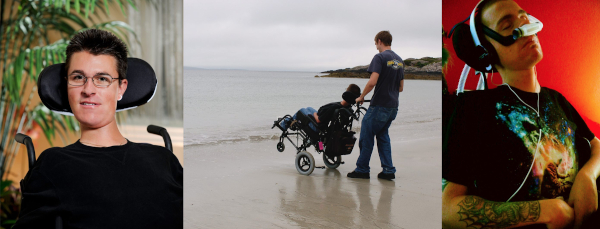
Echoes of the Invisible is less about epic journeys, grandiose spectacles or cherished “accomplishments” than it is about what we make visible and invisible through the filter of our lives in this brief moment we’ve been given. My friends Jeff and Scott Brown are brothers who were born with Duchenne Muscular Dystrophy, a disorder which took Jeff’s life not long before Echoes of the Invisible was completed. Their condition makes physical movement near impossible, yet it revealed depths within themselves — and others — which may otherwise have gone unexplored.
“Comfort is often the enemy of growth,” Scott writes in his memoir, Breakdowns and Breakthroughs. “I’m not a stripper, but have probably been naked around the same amount of people. I have had more people give me a shower or wipe my butt than the average person, but it’s taught me to trust humanity and be open to what the universe has to provide. …The way I look at it is that I’m like a terminal for others; people are always coming and going from my life, like cruise ships in a port. I have met so many artists, yogis, musicians, stoners, junkies, ex-gang bangers, people of different classes, cultures and ways of thinking. Some outwear their welcome, while others leave imprints on my heart.

“When I first moved out,” Scott continues, “I was seeking independence, but now that I’m living in my own apartment, I’ve realized that everyone is interdependent. I finally realized what my brother had realized six years before. Acceptance wasn’t a form of defeat, it was a form of understanding. Life is a beautiful decay. Although it was difficult for Jeff to see the world, he brought the world to himself … This isn’t a disease, but a reason to live.”
To me, Jeff and Scott are an extraordinary embodiment of Joseph Campbell’s claim that “Life has no meaning. Each of us has meaning and we bring it to life. It is a waste to be asking the question, when you are the answer.” In this sense, Echoes of the Invisible is as much about you as it is about any of these people I met while making it. I would never want to prescribe what anyone should take away from the film, but this is one point I hope is not lost. The Sufis say that there are as many paths to God as there are people on Earth. We are all connected through our struggles to see in the dark. But we are also connected by our opportunity to discover in each other — like a universe in a grain of sand – just how much eternity we bring to our very brief and fragile moment in time.
All images courtesy Steve Elkins.


